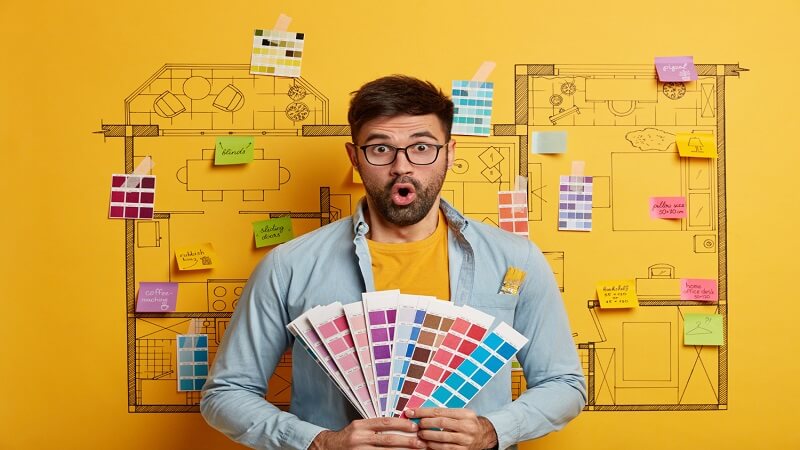Discover how vibrant art transforms spaces—boosting mood, energy, and well-being through color, form, and intentional design.
Art holds a rare power to transform space — it transmits feelings, alters moods, and reshapes how we experience our daily environment. In recent years, a perceptible shift has unfolded in modern homes and workplaces: away from the austere minimalism of decades past, and toward interiors that emphasize personality, well‑being, and positive energy.
At the heart of this transformation lies vibrant art — works marked by bold colors, dynamic forms, and compositions that actively engage those around them.
Grasping how and why these design choices matter is essential if you want spaces that are inspiring and functional. This piece explores the growing trend toward vibrant art, looks at psychological research behind color and form, and examines how these stylistic shifts are being used strategically to improve emotional climates and overall satisfaction in modern interiors.
The psychology of color and form in shared spaces
While vibrant art may often be seen simply as decoration, research shows it plays a deeper, measurable role in affecting emotions and behavior. Bright hues like yellow or turquoise tend to promote feelings of joy, optimism, and energy.
Dynamic geometric or abstract forms — sharp lines, asymmetries, contrasts — can cut through visual monotony and stimulate creative thought. In office environments, such elements are increasingly employed to foster innovation, raise morale, and mitigate the fatigue associated with sterile or overly uniform design.
One study of university residence halls in Italy compared buildings that shared the same architecture but differed only in interior color — walls, ceilings, floors. Over a period of more than a year, residents in blue and green interiors reported calmer moods, improved ability to focus, and greater satisfaction, compared to those in red, yellow, or orange spaces.
This suggests that color selection isn’t just aesthetics — it has real implications for well‑being and performance. Other research backs up the idea that high saturation and strong contrast increase visual interest, but also warns that overly intense warm tones (reds, oranges) in large expanses can raise arousal and, in certain cases, distraction or discomfort.
Integrating vibrant art into corporate and residential settings
When deciding to incorporate vibrant art, the first step is to consider the function of the space. In living rooms, such art can serve as a focal point, bringing warmth and sparking conversation. In workspaces, the suggestion is to opt for pieces that stimulate creativity. Artists associated with the “Happy Art” movement offer excellent examples of how the energy of color can invigorate a space.
The intricate patterns and optimistic themes found in Romero Britto’s original drawings illustrate how the combination of intense hues and striking lines translates into welcoming and stimulating environments, making them a popular choice for modern interiors.
The strategy of curation: beyond the single centerpiece
Curation plays a pivotal role in making vibrant art feel intentional rather than overwhelming. Instead of relying on a single large piece, many designers now use gallery walls, mixing sizes, textures, frames. This approach adds narrative depth and allows flexibility: you can rotate works, add or remove pieces over time to refresh visual impact.
Sculptures, decorative objects, and lighting installations also factor in: a brightly colored lamp, an unexpected sculptural object, or art integrated with architecture (like colored panels or built‑in fixtures) enrich the sensory experience of a room.
The democratization of art: accessibility and diversity in the modern market
Contrary to the notion that vibrant art is expensive or exclusive, it’s become more accessible. Platforms offering original illustrations, posters, and limited‑edition prints allow people to introduce bold art without huge budgets. Replica pieces, curated marketplaces, and emerging artists are broadening choices.
Inclusion and diversity are also growing priorities: bringing in artists from varied cultural, ethnic, or stylistic backgrounds enriches the pool of voices, themes, and designs one can choose from — making interiors more personal and socially relevant.
Vibrant art as an instrument of connection
Beyond aesthetics alone, vibrant art can serve social and emotional functions. In waiting rooms, communal spaces, or public reception areas, pieces that invite attention through color, subject matter or form, can stimulate conversation, ease tension, or help visitors feel more welcome. In homes, art that reflects memories, identity, or joyful moments can enhance a sense of belonging. The presence of art that resonates emotionally helps anchor spaces in human experience rather than detachment or uniformity.
Making intentional choices
Choosing vibrant art is not just about following a trend — it’s about investing in quality of life. Bold colors, dynamic forms, and carefully curated displays can transform interiors from passive backdrops into energized, inspiring spaces.
When design decisions are guided by research, respect for space function, and sensitivity to how people emotionally respond, interiors become more than beautiful: they become restorative, engaging, and deeply personal.
